Shiva, the First Yogi
Shiva, the First Yogi. Explore the ancient wisdom and transcendental teachings that continue to inspire seekers on the path of self-realization."
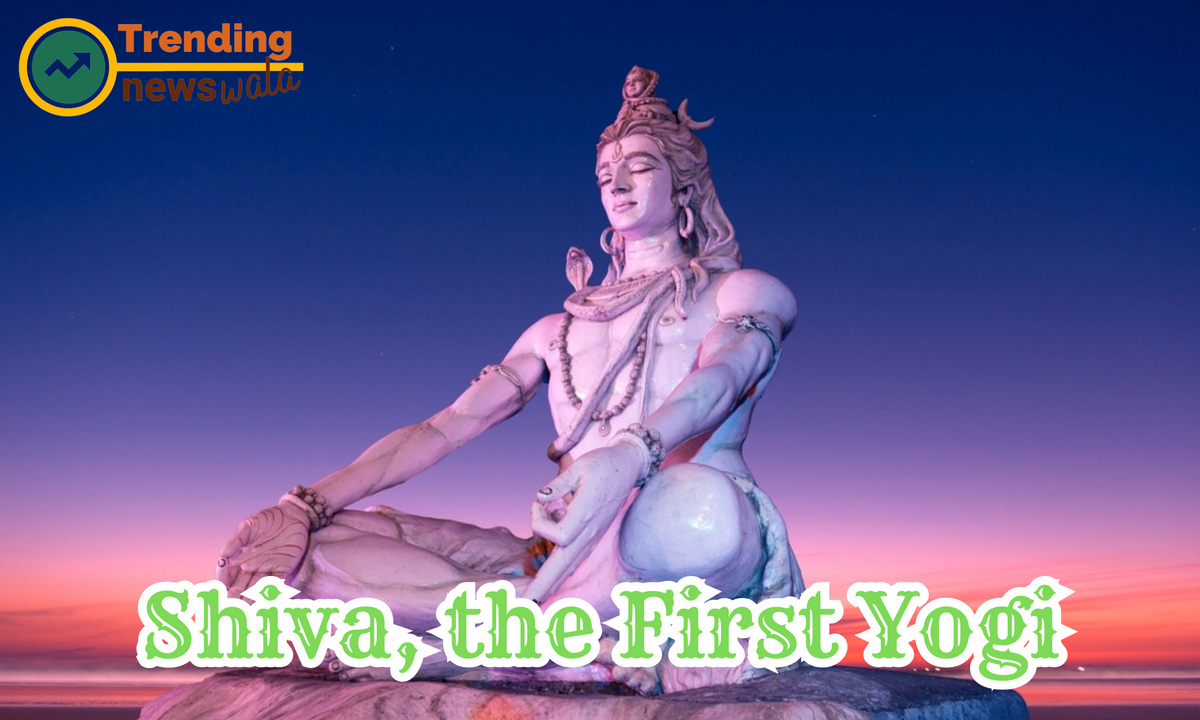
In the vast tapestry of Hindu mythology and philosophy, Lord Shiva stands as a profound and multifaceted deity. Often revered as the "Adi Yogi" or the First Yogi, Shiva embodies the quintessence of yogic wisdom and spiritual enlightenment. In this article, we delve into the timeless narrative of Shiva as the First Yogi, exploring the symbolism, teachings, and cosmic dance that define this transcendent aspect of the deity.
Shiva, the First Yogi, beckons humanity to embark on a journey of self-discovery and spiritual evolution. His cosmic dance, yogic teachings, and timeless presence continue to inspire seekers to tread the path of enlightenment, inviting individuals to partake in the mystical dance of life with reverence, mindfulness, and a deep connection to the divine.
Shiva, the Supreme Yogi
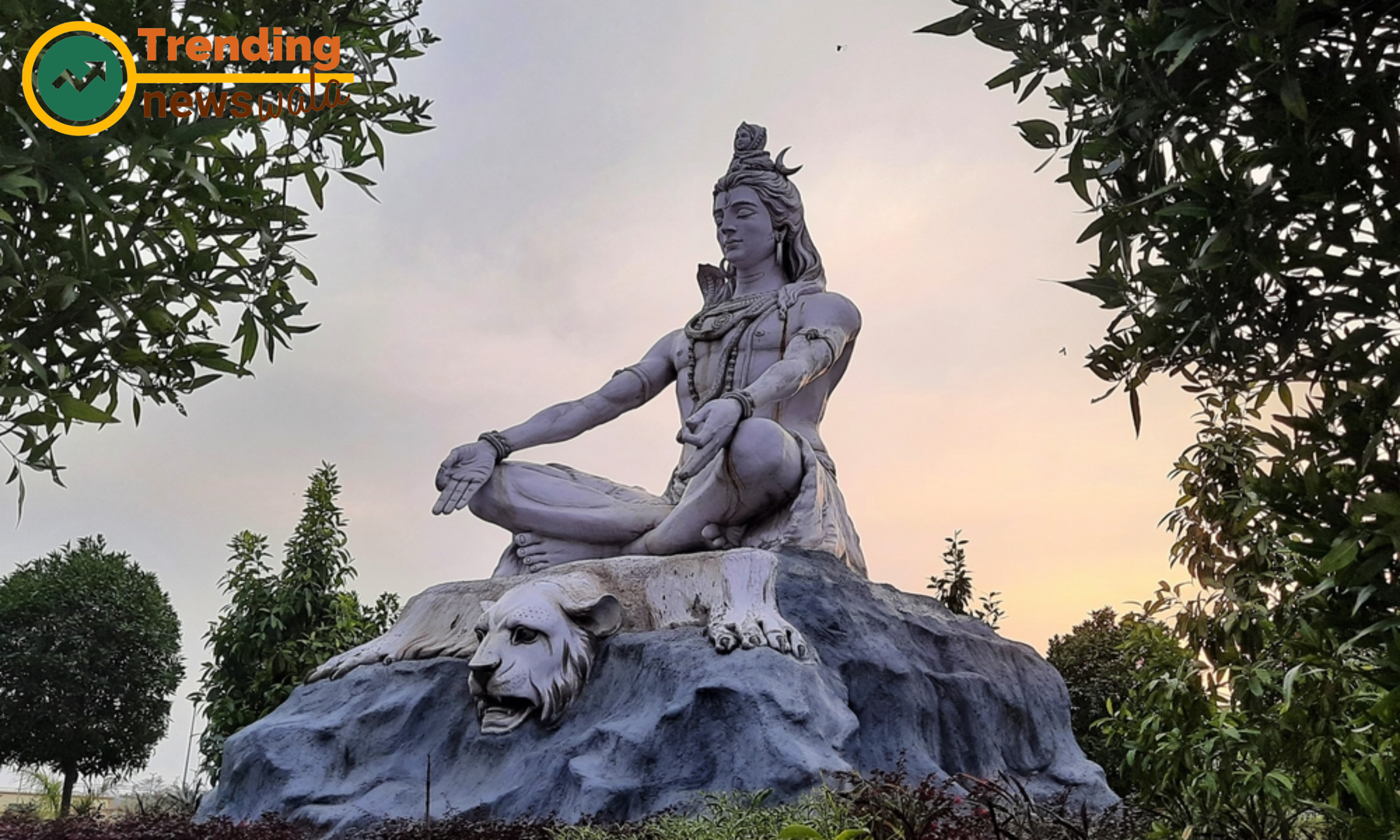
In the Hindu tradition, Shiva is not just a god but the embodiment of ultimate reality and consciousness. As the Adi Yogi, Shiva is regarded as the first teacher of yoga, bestowing the ancient science of self-realization upon humanity.
In the rich tapestry of Hindu mythology, Lord Shiva emerges as an embodiment of cosmic consciousness, the eternal yogi whose transcendent teachings illuminate the path to spiritual enlightenment. Revered as the Supreme Yogi, Shiva's essence extends beyond the realms of mythology, offering profound insights into the nature of existence and the transformative power of yoga. In this article, we delve into the mystique of Shiva, exploring his role as the Supreme Yogi and the timeless wisdom he imparts to seekers on the path of self-realization.
Shiva, the Cosmic Consciousness: In the Hindu pantheon, Shiva stands as a principal deity associated with the forces of creation, preservation, and destruction. As the Supreme Yogi, Shiva embodies the ultimate reality, representing the unchanging, formless essence that underlies the universe.
The Yogic Symbolism of Shiva: Shiva's iconic representation often features him in deep meditation, seated in profound stillness. This imagery symbolizes the yogic state of transcendence, where the practitioner attains union with the higher self and experiences a profound connection with the cosmic consciousness.
The Dance of Tandava: Shiva's celestial dance, known as Tandava, epitomizes the cosmic rhythm of creation and dissolution. Tandava symbolizes the cycles of life, death, and rebirth, emphasizing the impermanence of the material world and the eternal dance of the divine.
Teachings of Detachment and Renunciation: As the Supreme Yogi, Shiva imparts profound teachings on the importance of detachment and renunciation. By relinquishing attachment to transient material aspects, individuals can attain a state of inner equilibrium and focus on the eternal aspects of the self.
Shiva and the Yogic Path of Asceticism: Shiva's ascetic lifestyle, often depicted residing in the austere abode of Mount Kailash, signifies the yogic path of renunciation. Through self-discipline, austerities, and meditation, Shiva exemplifies the yogic journey towards self-mastery and liberation.
The Symbolism of Third Eye: Shiva is often depicted with a third eye, representing the eye of wisdom and inner perception. This symbolism underscores the yogic insight that transcends ordinary sight, allowing the practitioner to perceive the deeper truths of existence.
Union of Shiva and Shakti: The divine union of Shiva and Shakti, his consort, signifies the merging of masculine and feminine energies. This sacred partnership represents the integration of opposing forces within the self, emphasizing the balance required for spiritual evolution.
Meditation and Tapas: Shiva's emphasis on meditation (dhyana) and tapas (austerity) serves as a guide for aspiring yogis. By turning inward through meditative practices and cultivating inner discipline, practitioners can attune themselves to the higher realms of consciousness.
The Sacred Mantra - Om Namah Shivaya: Devotees of Shiva often chant the sacred mantra "Om Namah Shivaya" as a powerful invocation. This mantra encapsulates the essence of devotion, surrender, and acknowledgment of the divine presence within and around us.
Shiva's Relevance Today: In the modern era, Shiva's teachings as the Supreme Yogi resonate with seekers of spiritual wisdom and those on the yogic path. His timeless guidance inspires individuals to embark on an inner journey, transcending the limitations of the material world and attaining union with the supreme reality.
Shiva, the Supreme Yogi, beckons humanity to explore the boundless depths of spiritual consciousness. His teachings, symbolic representations, and divine presence serve as a beacon for those on the path of self-realization. As seekers tread the yogic journey, guided by the wisdom of Shiva, they embark on a transformative quest to realize the eternal truths that underlie the cosmic dance of existence.
The Cosmic Dance - Nataraja
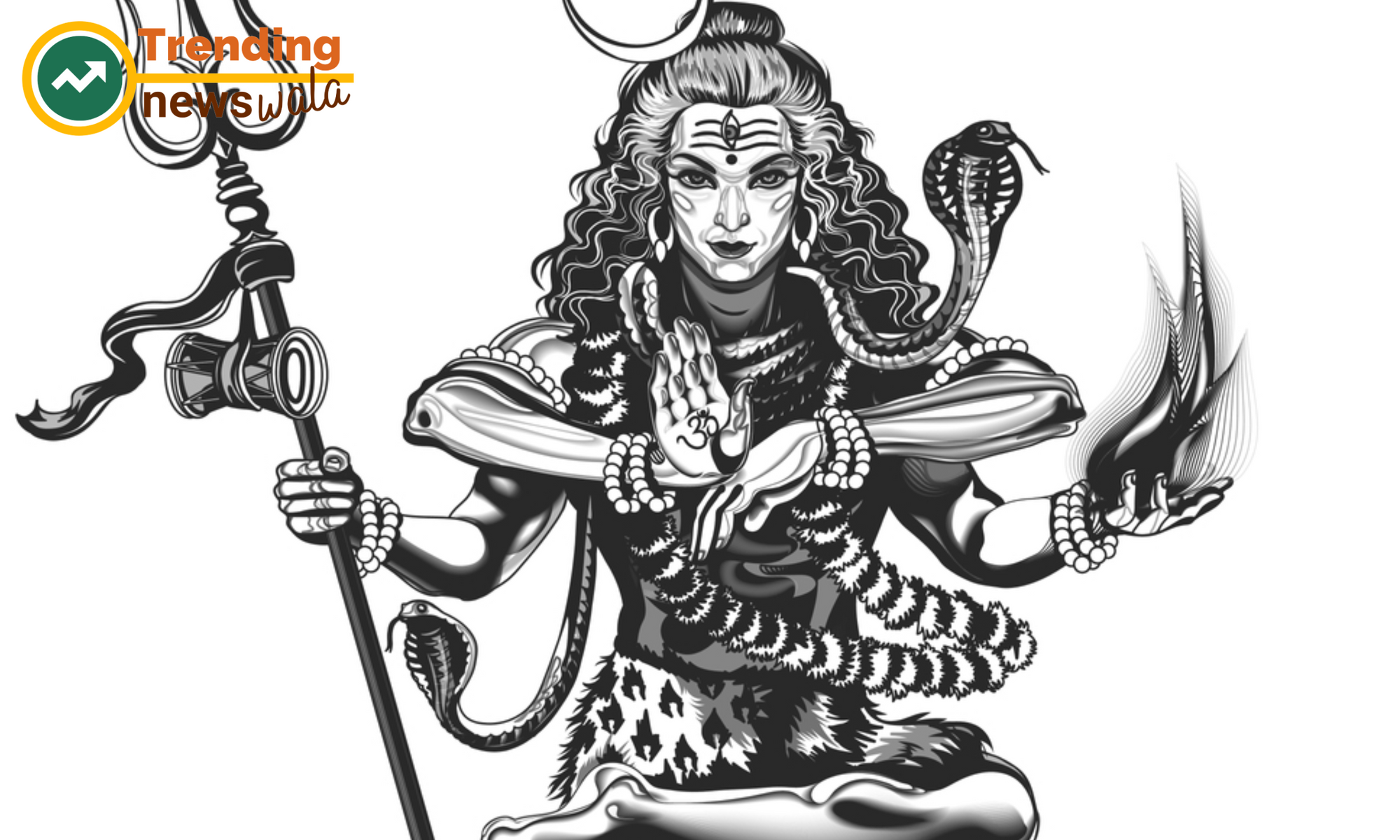
The iconic representation of Shiva's cosmic dance, known as Nataraja, encapsulates the dynamic interplay of creation, preservation, and destruction. The dance symbolizes the eternal rhythm of the universe, with Shiva as the masterful dancer in the grand cosmic ballet.
In the grand tapestry of Hindu mythology and symbolism, the cosmic dance of Lord Shiva as Nataraja stands as an iconic representation of the eternal cycles of creation, preservation, and destruction. Nataraja, the King of Dance, encapsulates the profound philosophy of the cosmic order and the dynamic interplay of forces that govern the universe. In this article, we delve into the symbolism and significance of the Nataraja, exploring the divine choreography that unfolds in the cosmic dance.
Nataraja: The King of Dance: Nataraja, a manifestation of Lord Shiva, is revered as the cosmic dancer whose rhythmic movements orchestrate the perpetual dance of the universe. This iconic representation is a visual metaphor for the cosmic order and the eternal cycles of life.
The Symbolism of the Dance: Nataraja's dance symbolizes the continuous cycle of creation, preservation, and dissolution. The rhythmic beats of the dance mirror the cosmic heartbeat, echoing the eternal flow of time and the ceaseless evolution of the universe.
Anandatandava - The Dance of Bliss: Nataraja's dance is often referred to as Anandatandava, the Dance of Bliss. It signifies the divine joy that emanates from the realization of the interconnectedness of all existence and the harmonious balance within the cosmic order.
The Cosmic Drum - Damaru: Nataraja holds a small drum, known as Damaru, symbolizing the primal sound of creation. The beats of the drum represent the cosmic vibrations that give rise to the myriad forms in the universe, illustrating the power of sound in shaping reality.
The Fire of Transformation - Agni: The flame held by Nataraja's hand represents Agni, the fire of transformation and purification. It symbolizes the cyclical nature of destruction and creation, where the old gives way to the new in an unending cycle of regeneration.
Goddess Nandi - The Divine Bull: Nataraja is often depicted standing on the back of a celestial bull, Nandi. This symbolizes the conquest of ignorance, as the bull represents the forces of darkness and inertia that are overcome by the divine dance of enlightenment.
The Crescent Moon: Adorning Lord Shiva's matted locks, the crescent moon symbolizes the passage of time and the lunar cycles. It underscores the cyclical nature of life and death, emphasizing the eternal recurrence embedded in the cosmic dance.
The Symbolism of the Cobra: The cobra that encircles Shiva's neck represents Kundalini, the latent spiritual energy coiled at the base of the spine. As Shiva dances, the serpent rises, signifying the awakening of spiritual consciousness and the journey towards self-realization.
The Four Arms: Nataraja's four arms represent the cardinal directions, symbolizing the omnipresence of the divine. Each hand holds specific attributes, such as the drum, the flame, the raised hand in blessing, and the hand pointing to the raised foot, each carrying profound symbolic significance.
Relevance in Modern Spirituality: The cosmic dance of Nataraja continues to hold deep significance in contemporary spirituality. Its symbolism resonates with seekers who explore the interconnectedness of existence, the rhythm of life, and the transformative power of embracing both creation and dissolution.
Nataraja's cosmic dance is a timeless symbol that invites contemplation on the intricate dance of existence. In its dynamic symbolism, we find an invitation to attune ourselves to the cosmic rhythms, embrace the cycles of life, and partake in the eternal dance of creation, preservation, and dissolution that defines the majestic choreography of the universe.
Yoga as a Path to Enlightenment
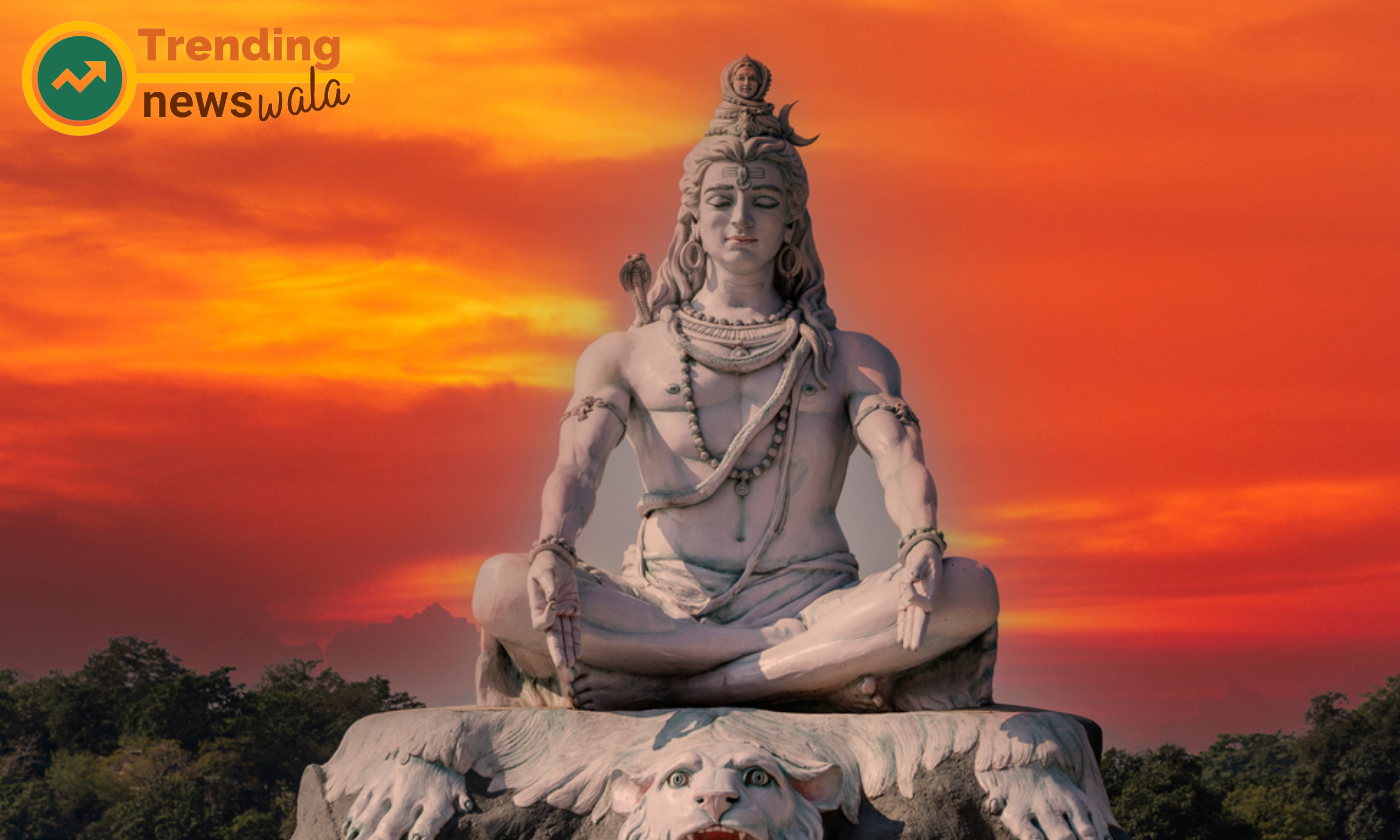
Shiva's role as the First Yogi emphasizes the profound significance of yoga as a transformative path to enlightenment. The yogic teachings attributed to Shiva emphasize the union of the individual soul (Atman) with the universal consciousness (Brahman) through various yogic practices.
Yoga, a profound spiritual and physical discipline originating in ancient India, has transcended millennia to become a globally embraced path towards physical well-being, mental harmony, and spiritual enlightenment. In its essence, yoga is not merely a series of physical postures but a transformative journey that leads practitioners towards self-discovery and enlightenment. In this article, we explore the profound philosophy of yoga as a path to enlightenment, unraveling the layers of its teachings and practices.
The Ancient Roots of Yoga: Yoga finds its roots in ancient Indian philosophy, with the earliest mentions dating back to the Vedas and Upanishads. The word "yoga" itself is derived from the Sanskrit root "yuj," meaning union or yoking, signifying the connection between the individual soul (Atman) and the universal consciousness (Brahman).
The Eight Limbs of Yoga - Ashtanga Yoga: The classical path of yoga, as outlined by Sage Patanjali in the Yoga Sutras, consists of eight limbs known as Ashtanga Yoga. These limbs include ethical principles (Yamas and Niyamas), physical postures (Asanas), breath control (Pranayama), withdrawal of the senses (Pratyahara), concentration (Dharana), meditation (Dhyana), and ultimate enlightenment (Samadhi).
Physical Postures - Asanas: While yoga postures, or asanas, have gained widespread popularity, they constitute just one limb of the comprehensive yogic system. Asanas serve as a means to prepare the body for meditation and enhance physical well-being, promoting flexibility, strength, and balance.
Breath Control - Pranayama: Pranayama involves conscious control of breath, linking the breath to the mind and emotions. Through various breathing techniques, practitioners cultivate awareness, increase vitality, and attain a state of inner balance, laying the groundwork for meditation.
Meditation - Dhyana: Meditation is a central aspect of yoga, encouraging focused attention and inner stillness. By calming the fluctuations of the mind, practitioners delve into the depths of consciousness, paving the way for self-realization and a deeper connection with the divine.
Ethical Principles - Yamas and Niyamas: The Yamas and Niyamas form the ethical foundation of yoga, guiding practitioners in right conduct towards oneself (Niyamas) and others (Yamas). These principles encompass aspects such as truthfulness, non-violence, contentment, self-discipline, and devotion.
The Role of Mindfulness - Pratyahara: Pratyahara involves withdrawing the senses from external stimuli, turning the focus inward. Mindfulness practices aid in detaching from sensory distractions, fostering a heightened awareness of one's thoughts, feelings, and the present moment.
The Science of Concentration - Dharana: Concentration is a pivotal step in the yogic journey. Dharana involves focusing the mind on a single point, be it the breath, a mantra, or an image. Cultivating concentration paves the way for deeper states of meditation.
Samadhi - Enlightenment and Union: The ultimate goal of yoga is Samadhi, a state of profound spiritual absorption and union with the divine. In Samadhi, the individual self merges with the universal consciousness, transcending the limitations of the ego and realizing the inherent oneness of all existence.
Yoga's Relevance in the Modern World: In our fast-paced, modern lives, the teachings of yoga offer solace and guidance. Beyond physical benefits, yoga serves as a holistic approach to well-being, providing tools for managing stress, enhancing mental clarity, and fostering a sense of inner peace.
Yoga, as a path to enlightenment, is a transformative journey that extends beyond the physical postures often associated with it. It is a holistic system that integrates ethical principles, breath control, mindfulness, and meditation to lead practitioners towards self-realization and union with the divine. In embracing the teachings of yoga, individuals embark on a profound inner journey, unraveling the layers of the self to discover the timeless wisdom that leads to enlightenment.
Shiva and the Science of Meditation
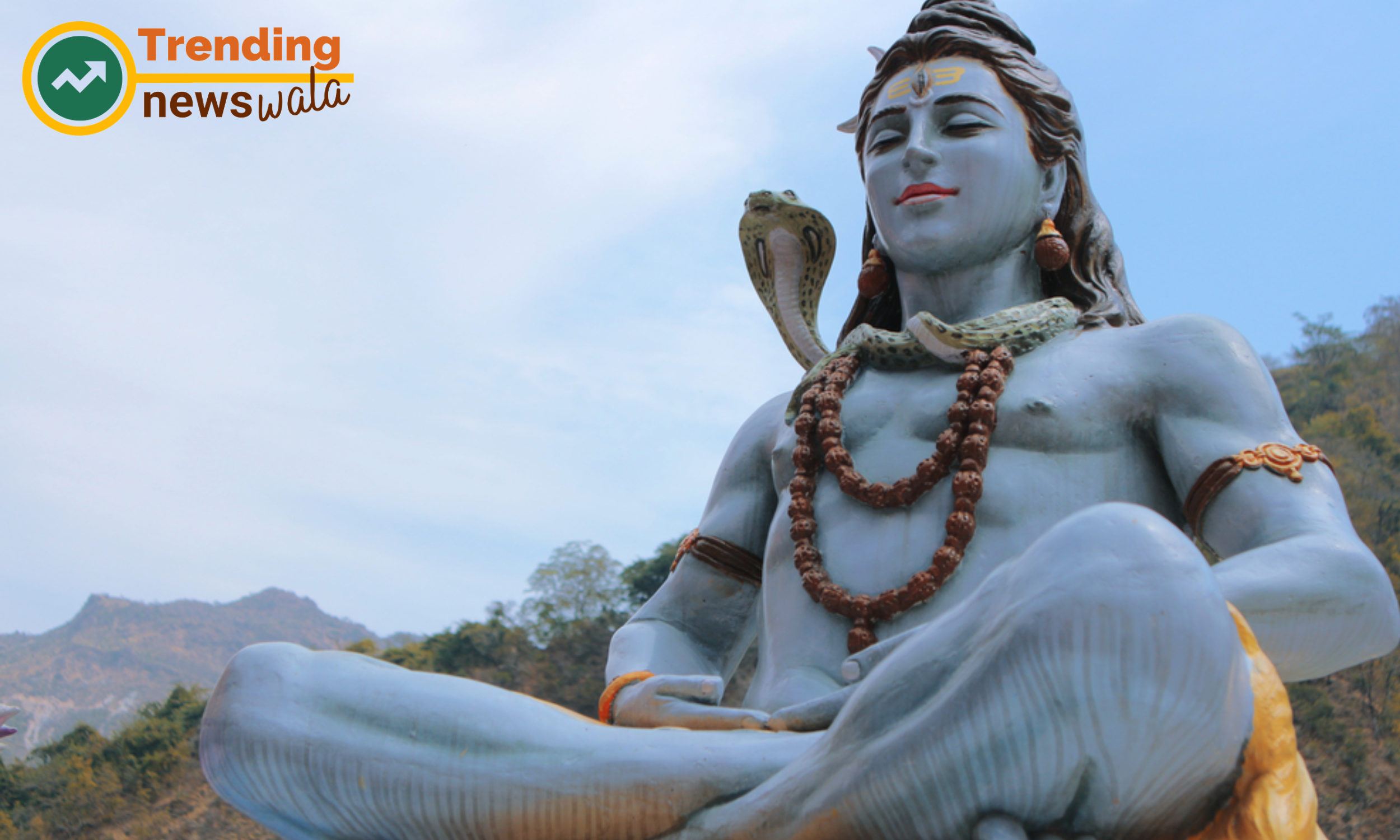
Shiva is often depicted in deep meditation, symbolizing the meditative aspect of yoga. The tranquil image of Shiva absorbed in contemplation inspires seekers to delve into the inner realms of consciousness, fostering a connection with the divine through meditation.
In the expansive realm of Hindu mythology and spiritual philosophy, Lord Shiva stands as an exemplar of profound meditation and contemplation. Shiva, often depicted in deep meditative states, is considered the supreme yogi whose teachings unlock the mysteries of the science of meditation. In this article, we explore the connection between Shiva and the science of meditation, unraveling the timeless wisdom that guides seekers on the path of inner transformation.
Shiva: The Supreme Yogi and Meditator: Shiva, revered as the Adi Yogi (the first yogi) and the Lord of Meditation, epitomizes the essence of deep contemplation and spiritual awakening. His iconic representation in meditation symbolizes the stillness and tranquility that meditation seeks to cultivate within the practitioner.
The Symbolism of Shiva's Meditation: Shiva meditative posture, often seated in Padmasana (lotus position) with closed eyes, signifies a state of internalized awareness. The half-open eyes underpin his vigilance and unwavering focus, portraying the delicate balance between inner reflection and external awareness.
Mount Kailash: The Abode of Meditation: Shiva is often associated with Mount Kailash, considered his divine abode. The rugged terrains of Mount Kailash symbolize the challenges and ascetic practices undertaken in the pursuit of higher states of consciousness through meditation.
Third Eye - The Eye of Wisdom: Shiva's third eye, the eye of wisdom located on his forehead, represents the heightened perception attained through meditation. It signifies the awakening of inner vision and the ability to see beyond the physical realm into the realms of spiritual insight.
Shiva's Consort - Shakti: The union of Shiva with his consort, Shakti, exemplifies the harmonious balance achieved through meditation. Shakti represents the dynamic, creative force, while Shiva's meditative state symbolizes the serenity and stability that come from tapping into the deeper aspects of consciousness.
Teachings on Meditation in the Scriptures: The ancient scriptures, including the Vedas and Upanishads, contain profound teachings on meditation attributed to Shiva. These texts delve into the techniques of meditation, emphasizing the journey from external rituals to inner contemplation.
Jyotirlingas - Manifestations of Cosmic Energy: The twelve Jyotirlingas, considered sacred manifestations of Shiva, symbolize points of cosmic energy. Pilgrimage to these sites is believed to facilitate a connection with the divine and aid in the practitioner's meditation journey.
Shiva's Mantra and Meditation: Chanting the mantra "Om Namah Shivaya" is a meditative practice that aligns practitioners with the vibration of the universe. It serves as a powerful tool to still the mind and deepen the meditative experience, fostering a sense of oneness with the cosmic energy.
Shiva's Dance - A Moving Meditation: The cosmic dance of Shiva, known as Tandava, represents the dynamic aspects of creation and destruction. Even in movement, Shiva's dance embodies a form of meditation, symbolizing the rhythm and harmony that underlie the universe.
Guidance for Modern Meditators: Shiva's teachings on meditation offer timeless guidance for modern practitioners. By incorporating regular meditation into their lives, individuals can experience the profound benefits of enhanced focus, emotional well-being, and a deeper connection with the self and the universe.
Shiva, as the eternal meditator, serves as an inspiration for seekers on the path of inner transformation. His teachings and symbolism offer a roadmap for those embarking on the science of meditation, guiding them towards stillness, heightened awareness, and a profound connection with the cosmic energy that permeates the universe. In adopting Shiva's wisdom, modern meditators can tap into the transformative power of meditation and embark on a journey of self-discovery and spiritual evolution.
The Teaching of Advaita Vedanta
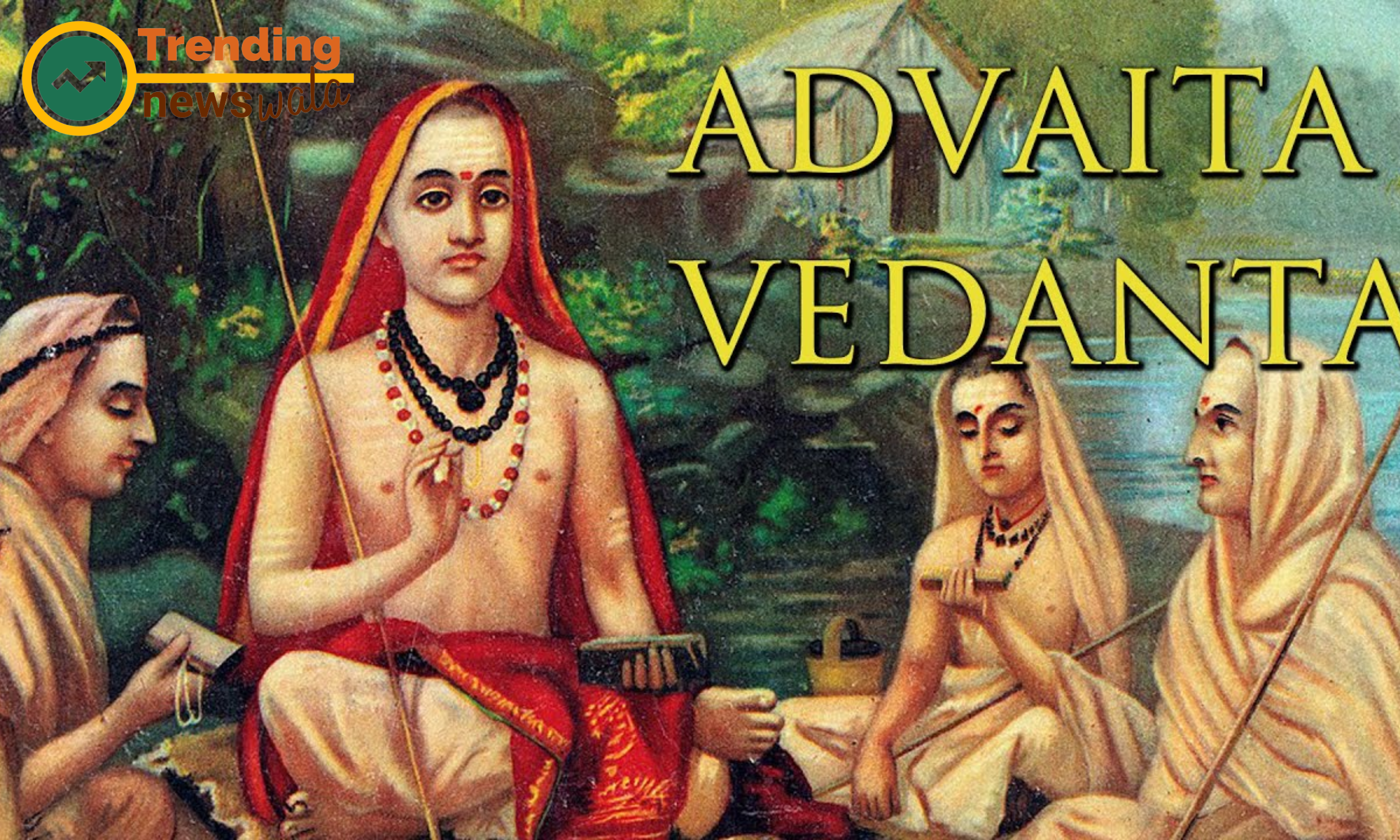
Shiva's teachings align with the philosophy of Advaita Vedanta, which emphasizes the non-dual nature of reality. The understanding that the individual soul is ultimately one with the cosmic consciousness underlines the essence of Shiva's yogic teachings.
Advaita Vedanta, one of the oldest and most profound philosophical traditions within Hinduism, explores the nature of ultimate reality and the relationship between the individual soul (Atman) and the universal consciousness (Brahman). At the heart of Advaita Vedanta is the principle of non-dualism, asserting that the essence of the self and the divine are inseparable. In this article, we delve into the teachings of Advaita Vedanta, unraveling the essence of non-dualism and its implications for spiritual seekers.
Origins of Advaita Vedanta: Advaita Vedanta traces its roots to the ancient Indian scriptures, particularly the Upanishads, which form the culmination of Vedic thought. The word "Advaita" translates to non-duality, emphasizing the fundamental unity underlying all of existence.
Adi Shankaracharya: Pioneer of Advaita Vedanta: Adi Shankaracharya, an eminent philosopher and theologian of the 8th century, played a pivotal role in systematizing and popularizing the teachings of Advaita Vedanta. His commentaries on the Upanishads, Bhagavad Gita, and Brahma Sutras serve as authoritative texts in understanding non-dualistic philosophy.
Non-Dualism - Oneness of Atman and Brahman: At the core of Advaita Vedanta is the doctrine that Atman, the individual soul, is identical to Brahman, the ultimate reality or cosmic consciousness. The apparent duality experienced in the world is considered an illusion (Maya), and realizing the non-dual nature is the key to spiritual liberation (Moksha).
Maya - Illusion of Separation: Maya, often translated as illusion, is a central concept in Advaita Vedanta. It refers to the cosmic illusion that veils the true nature of reality, leading individuals to perceive multiplicity and separation. Recognizing and transcending Maya is essential for realizing the unity of Atman and Brahman.
The Mandukya Upanishad and AUM: The Mandukya Upanishad, a key text in Advaita Vedanta, expounds on the significance of the sacred syllable AUM. The three letters of AUM represent the states of waking, dreaming, and deep sleep, while the silence that follows signifies the transcendent, formless reality beyond these states.
Self-Realization and Jnana Yoga: Advaita Vedanta emphasizes Jnana Yoga, the path of knowledge, as a means to attain self-realization. Through introspection, contemplation, and understanding the nature of the self, individuals can pierce through the veil of illusion and realize their inherent oneness with Brahman.
Neti, Neti - The Path of Negation: The method of Neti, Neti (not this, not this) encourages seekers to negate all that is impermanent and transient, guiding them towards the recognition of the eternal and unchanging reality that underlies the temporal world.
Bhakti and Karma Yoga within Non-Dualism: While Jnana Yoga is the primary path in Advaita Vedanta, the philosophy recognizes the significance of Bhakti Yoga (path of devotion) and Karma Yoga (path of selfless action) as complementary approaches to attaining spiritual realization. Devotion and selfless service become ways to purify the mind and prepare it for higher knowledge.
Guru Disciple Tradition: The transmission of Advaita Vedanta often occurs through the Guru-Disciple tradition. The guidance of a realized teacher (Guru) is considered crucial in unraveling the intricacies of non-dualistic philosophy and guiding seekers on the path to enlightenment.
Relevance in Contemporary Spirituality: The teachings of Advaita Vedanta remain relevant in the modern world, offering a profound framework for understanding the nature of reality and the self. In an era marked by diversity and complexity, the philosophy of non-dualism provides a timeless perspective on the underlying unity that connects all of existence.
Advaita Vedanta stands as a beacon of wisdom, inviting seekers to explore the profound teachings of non-duality. In realizing the oneness of the individual soul and the cosmic consciousness, practitioners of Advaita Vedanta embark on a transformative journey towards self-realization and spiritual liberation. The timeless philosophy continues to inspire those on the quest for truth, guiding them beyond the illusions of the material world to the eternal reality that lies at the heart of existence.
Shiva's Consort - Shakti
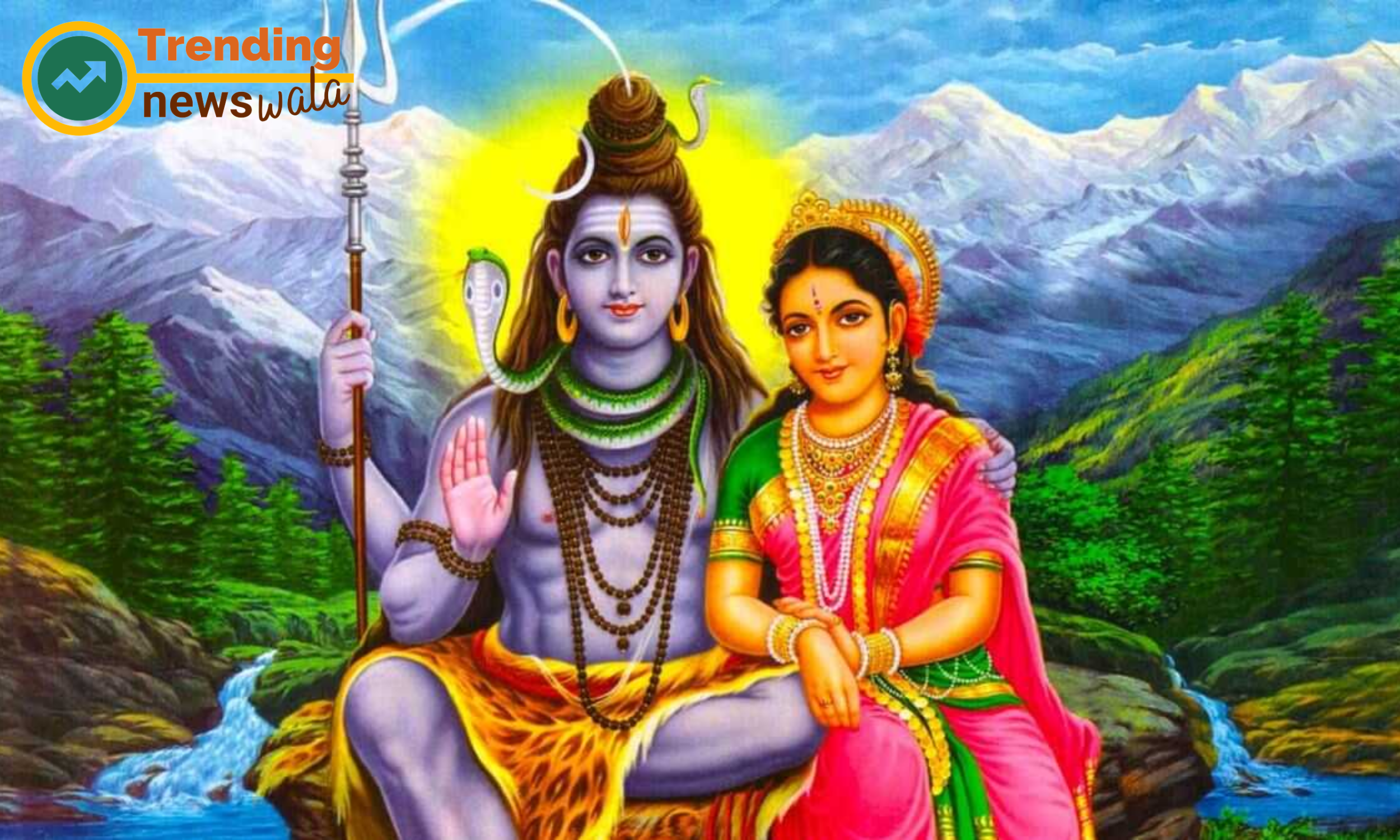
The divine interplay between Shiva and Shakti, his consort, symbolizes the harmonious union of masculine and feminine energies. This sacred partnership represents the balance and unity inherent in the yogic journey towards self-realization.
In Hindu mythology, the divine union of Lord Shiva and Goddess Shakti symbolizes the harmonious interplay of masculine and feminine energies, creating a cosmic dance that sustains the universe. Shakti, often referred to as the creative and dynamic force, complements Shiva's stillness and represents the pulsating energy that permeates all of existence. In this article, we explore the profound significance of Shiva's consort, Shakti, in the Hindu pantheon and the symbolism behind their divine partnership.
Shakti: The Embodiment of Divine Energy: Shakti, derived from the Sanskrit word meaning "power" or "energy," represents the feminine aspect of the divine. As the cosmic energy that animates the universe, Shakti is synonymous with creativity, dynamism, and the transformative force that propels life.
Shiva and Shakti: The Divine Union: The union of Shiva and Shakti represents the merging of opposites – the timeless dance of the masculine and feminine principles. Shiva, the embodiment of stillness and consciousness, finds completeness and creative potential in the dynamic energy of Shakti.
Ardhanarishvara: The Androgynous Form: The Ardhanarishvara form of Shiva, where half the body is Shakti and the other half is Shiva, visually symbolizes their inseparable connection. This androgynous depiction illustrates the concept that the divine is both transcendent and immanent, encompassing the duality and unity inherent in creation.
Shakti's Forms - Durga, Kali, Parvati, and Others: Shakti manifests in various forms, each representing a different aspect of her power. As Durga, she is the fierce warrior goddess; as Kali, the embodiment of time and transformation; and as Parvati, the gentle and nurturing consort of Shiva. These diverse manifestations showcase the multifaceted nature of divine feminine energy.
Shakti's Role in Creation and Preservation: Shakti is the cosmic force responsible for creation and preservation. In the Hindu trinity, Brahma, the creator, is often considered an aspect of Shakti, emphasizing her central role in the continuous cycle of birth, existence, and sustenance.
The Dance of Shiva and Shakti - Lila: The cosmic dance of Shiva and Shakti, known as Lila, symbolizes the perpetual cycle of creation and destruction. Shakti's rhythmic dance represents the ceaseless movement of the universe, while Shiva's participation signifies the witnessing and integration of this dynamic energy.
Kundalini Shakti: Awakening Inner Potential: Within the individual, Shakti is believed to reside in the form of Kundalini, a coiled serpent at the base of the spine. Spiritual practices, including yoga and meditation, aim to awaken and channel this potent energy, facilitating spiritual growth and enlightenment.
Tantric Philosophy and Shakti Worship: Tantric traditions emphasize the worship of Shakti as the primary means to attain spiritual realization. Through rituals, mantras, and visualizations, practitioners seek to connect with the divine feminine energy within and cultivate a deeper understanding of the inseparable union of Shiva and Shakti.
Shakti in Art and Symbolism: Artistic representations of Shakti often depict her with multiple arms, each holding symbolic objects representing various aspects of her power. The symbolism in these depictions invites contemplation on the multifaceted nature of divine feminine energy.
Relevance in Modern Spirituality: The symbolism of Shiva and Shakti continues to resonate in modern spirituality, offering a profound framework for understanding the balance between stillness and movement, consciousness and energy. In an era that embraces diversity and equality, the divine union of Shiva and Shakti serves as a powerful metaphor for the coexistence and interdependence of all aspects of life.
The divine consort of Shiva, Shakti, represents the cosmic dance of energies that give life to the universe. Their union transcends duality, embodying the unity underlying all of creation. As seekers navigate the intricate dance of life, the symbolism of Shiva and Shakti offers profound insights into the harmonious interplay of masculine and feminine energies, inspiring a deeper connection with the divine forces that shape the cosmos.
The Relevance of Shiva's Teachings Today
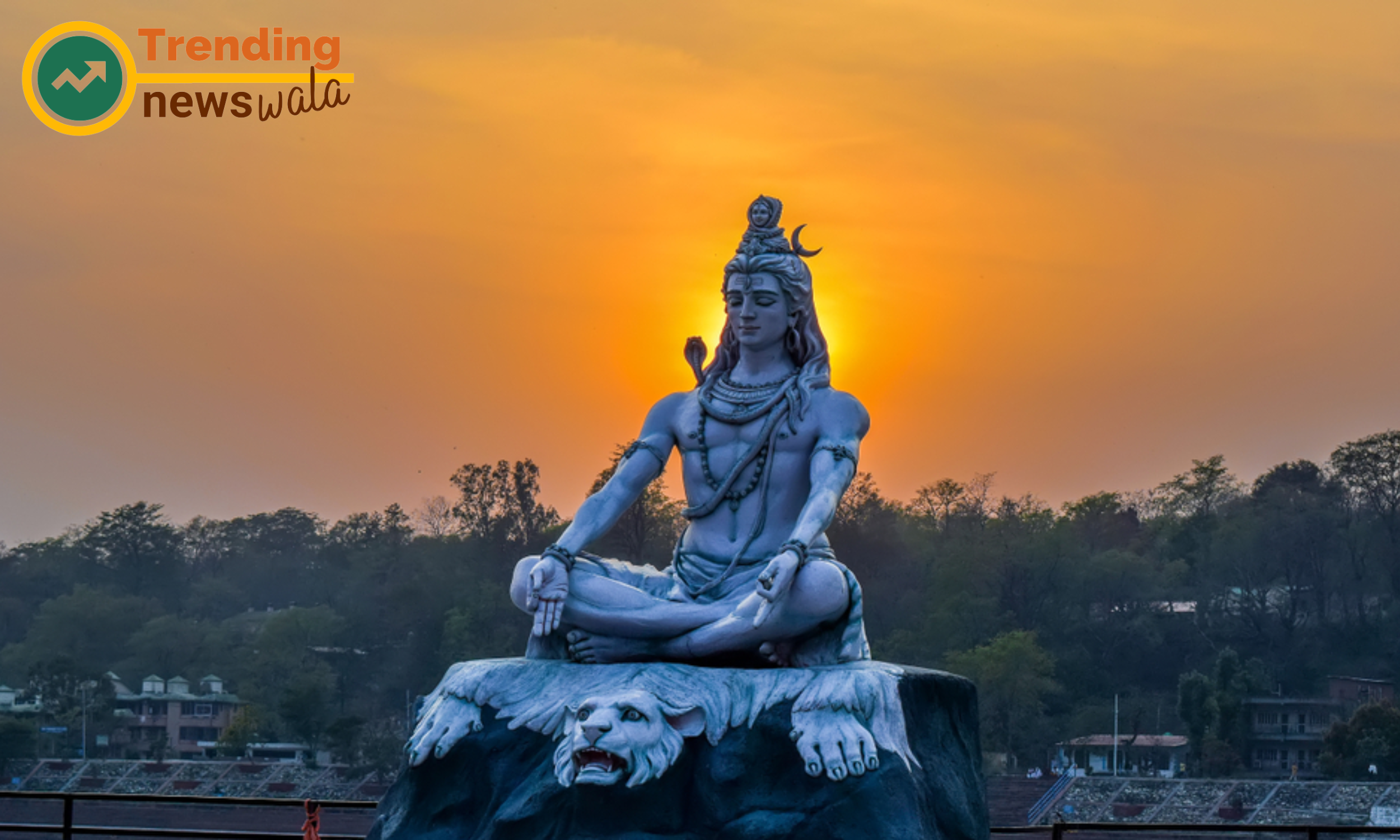
Shiva's teachings remain relevant in the contemporary world, offering guidance on navigating the complexities of life, finding inner balance, and embracing the transformative power of yoga. The universal principles elucidated by Shiva transcend cultural and temporal boundaries.
In Hindu mythology, the divine union of Lord Shiva and Goddess Shakti symbolizes the harmonious interplay of masculine and feminine energies, creating a cosmic dance that sustains the universe. Shakti, often referred to as the creative and dynamic force, complements Shiva's stillness and represents the pulsating energy that permeates all of existence. In this article, we explore the profound significance of Shiva's consort, Shakti, in the Hindu pantheon and the symbolism behind their divine partnership.
Shakti: The Embodiment of Divine Energy: Shakti, derived from the Sanskrit word meaning "power" or "energy," represents the feminine aspect of the divine. As the cosmic energy that animates the universe, Shakti is synonymous with creativity, dynamism, and the transformative force that propels life.
Shiva and Shakti: The Divine Union: The union of Shiva and Shakti represents the merging of opposites – the timeless dance of the masculine and feminine principles. Shiva, the embodiment of stillness and consciousness, finds completeness and creative potential in the dynamic energy of Shakti.
Ardhanarishvara: The Androgynous Form: The Ardhanarishvara form of Shiva, where half the body is Shakti and the other half is Shiva, visually symbolizes their inseparable connection. This androgynous depiction illustrates the concept that the divine is both transcendent and immanent, encompassing the duality and unity inherent in creation.
Shakti's Forms - Durga, Kali, Parvati, and Others: Shakti manifests in various forms, each representing a different aspect of her power. As Durga, she is the fierce warrior goddess; as Kali, the embodiment of time and transformation; and as Parvati, the gentle and nurturing consort of Shiva. These diverse manifestations showcase the multifaceted nature of divine feminine energy.
Shakti's Role in Creation and Preservation: Shakti is the cosmic force responsible for creation and preservation. In the Hindu trinity, Brahma, the creator, is often considered an aspect of Shakti, emphasizing her central role in the continuous cycle of birth, existence, and sustenance.
The Dance of Shiva and Shakti - Lila: The cosmic dance of Shiva and Shakti, known as Lila, symbolizes the perpetual cycle of creation and destruction. Shakti's rhythmic dance represents the ceaseless movement of the universe, while Shiva's participation signifies the witnessing and integration of this dynamic energy.
Kundalini Shakti: Awakening Inner Potential: Within the individual, Shakti is believed to reside in the form of Kundalini, a coiled serpent at the base of the spine. Spiritual practices, including yoga and meditation, aim to awaken and channel this potent energy, facilitating spiritual growth and enlightenment.
Tantric Philosophy and Shakti Worship: Tantric traditions emphasize the worship of Shakti as the primary means to attain spiritual realization. Through rituals, mantras, and visualizations, practitioners seek to connect with the divine feminine energy within and cultivate a deeper understanding of the inseparable union of Shiva and Shakti.
Shakti in Art and Symbolism: Artistic representations of Shakti often depict her with multiple arms, each holding symbolic objects representing various aspects of her power. The symbolism in these depictions invites contemplation on the multifaceted nature of divine feminine energy.
Relevance in Modern Spirituality: The symbolism of Shiva and Shakti continues to resonate in modern spirituality, offering a profound framework for understanding the balance between stillness and movement, consciousness and energy. In an era that embraces diversity and equality, the divine union of Shiva and Shakti serves as a powerful metaphor for the coexistence and interdependence of all aspects of life.
The divine consort of Shiva, Shakti, represents the cosmic dance of energies that give life to the universe. Their union transcends duality, embodying the unity underlying all of creation. As seekers navigate the intricate dance of life, the symbolism of Shiva and Shakti offers profound insights into the harmonious interplay of masculine and feminine energies, inspiring a deeper connection with the divine forces that shape the cosmos.
Yoga as a Lifestyle
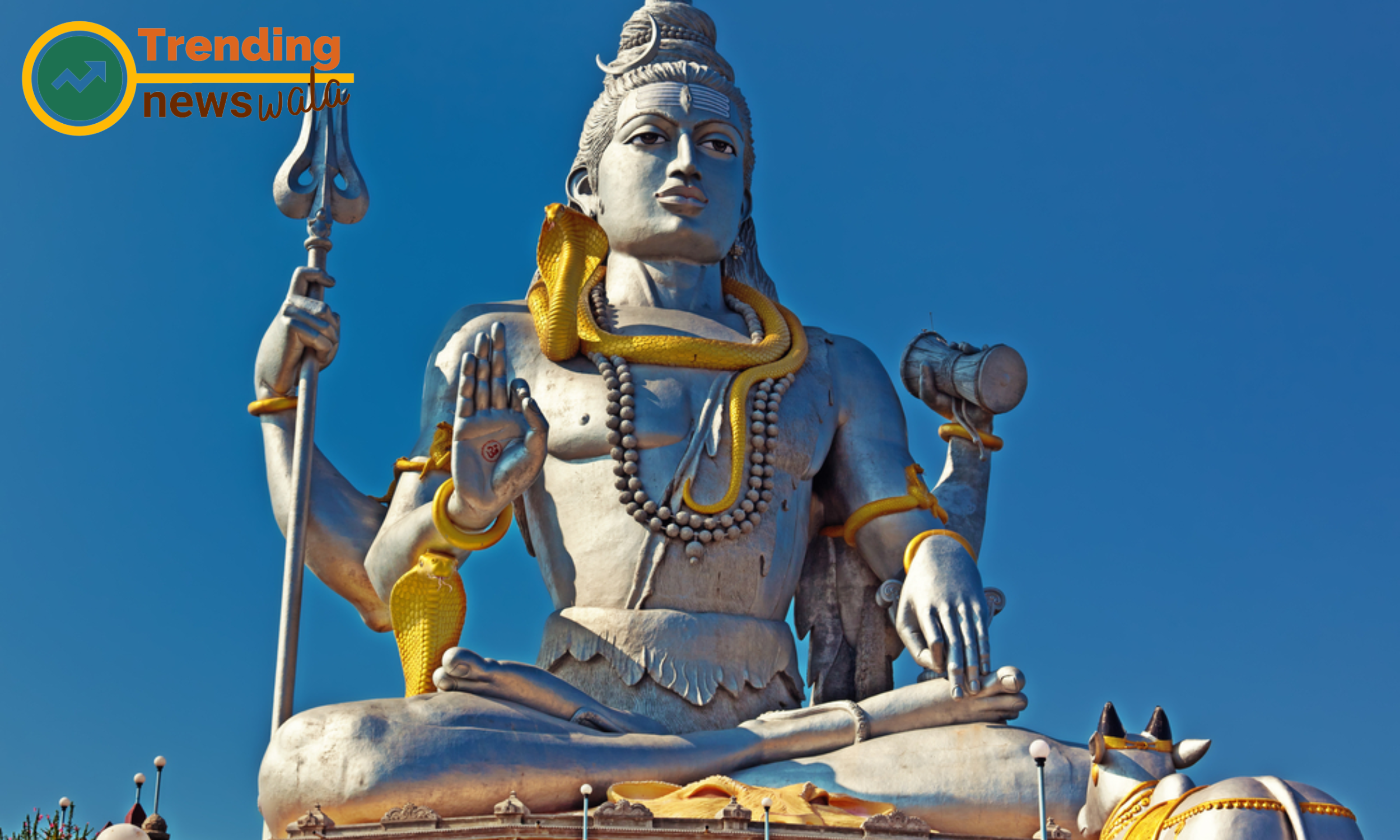
Shiva's legacy as the First Yogi invites individuals to adopt yoga not merely as a set of physical postures but as a holistic lifestyle. The integration of ethical principles, mindful practices, and spiritual awareness form the foundation of Shiva's yogic teachings.
Yoga, an ancient spiritual and physical practice, has transcended its origins in ancient India to become a holistic lifestyle embraced by people worldwide. Beyond the mat, yoga extends into various facets of life, offering a transformative approach to well-being. In this article, we explore the concept of yoga as a lifestyle, delving into its multifaceted aspects that nourish the mind, body, and spirit.
The Essence of Yoga Beyond Asanas: While yoga postures (asanas) are a visible aspect of the practice, yoga as a lifestyle extends beyond the physical. It encompasses a philosophy rooted in self-awareness, mindfulness, and the pursuit of inner balance.
Mindful Living and Present Awareness: Central to the yogic lifestyle is the practice of mindfulness – being fully present in each moment. Whether engaged in daily tasks or in meditation, cultivating present awareness fosters a sense of connection to the present reality.
Yamas and Niyamas - Ethical Guidelines : The Yamas and Niyamas, ethical principles outlined in yogic philosophy, provide a moral compass for practitioners. They include principles such as non-violence (ahimsa), truthfulness (satya), contentment (santosha), and self-discipline (tapas), guiding individuals towards righteous living.
Nutrition and Ahimsa: Ahimsa, the principle of non-violence, extends to dietary choices. Many practitioners adopt a vegetarian or plant-based diet as a way to align their eating habits with the yogic principle of causing the least harm to living beings.
Asanas for Physical Well-Being: The physical postures of yoga contribute to flexibility, strength, and overall physical health. Incorporating a regular asana practice into daily life helps alleviate stress, improve posture, and enhance the body's vitality.
Pranayama - Harnessing Breath for Energy: Pranayama, the control of breath, plays a vital role in the yogic lifestyle. Conscious breathing techniques not only enhance respiratory health but also channel life force energy (prana) throughout the body, fostering a sense of vitality.
Meditation for Mental Clarity: Meditation is a cornerstone of the yogic lifestyle, promoting mental clarity, emotional balance, and inner peace. Regular meditation practice helps individuals cultivate a focused mind, reducing stress and anxiety.
Yoga Philosophy in Daily Life: The philosophical teachings of yoga, drawn from texts like the Yoga Sutras and Bhagavad Gita, serve as guiding principles. Concepts such as detachment (vairagya), selfless action (karma yoga), and surrender to the divine (ishvara pranidhana) inform decision-making and lifestyle choices.
Community and Support: Engaging with a yoga community provides a supportive environment for practitioners. The exchange of ideas, shared experiences, and collective energy create a nurturing space for personal growth and spiritual development.
Adapting Yoga to Modern Living: Yoga as a lifestyle is adaptable to modern living. From mindful technology use to incorporating yoga principles in workplace dynamics, individuals can seamlessly integrate the yogic way of life into the demands of contemporary society.
Yoga as a lifestyle is a holistic approach to living that transcends the confines of a yoga studio. It invites individuals to weave the principles of mindfulness, ethical living, and physical well-being into the fabric of their daily existence. As more people embrace yoga beyond the mat, the transformative power of this ancient practice continues to enrich lives, fostering a harmonious balance of mind, body, and spirit in the modern world.
Temples Dedicated to Shiva
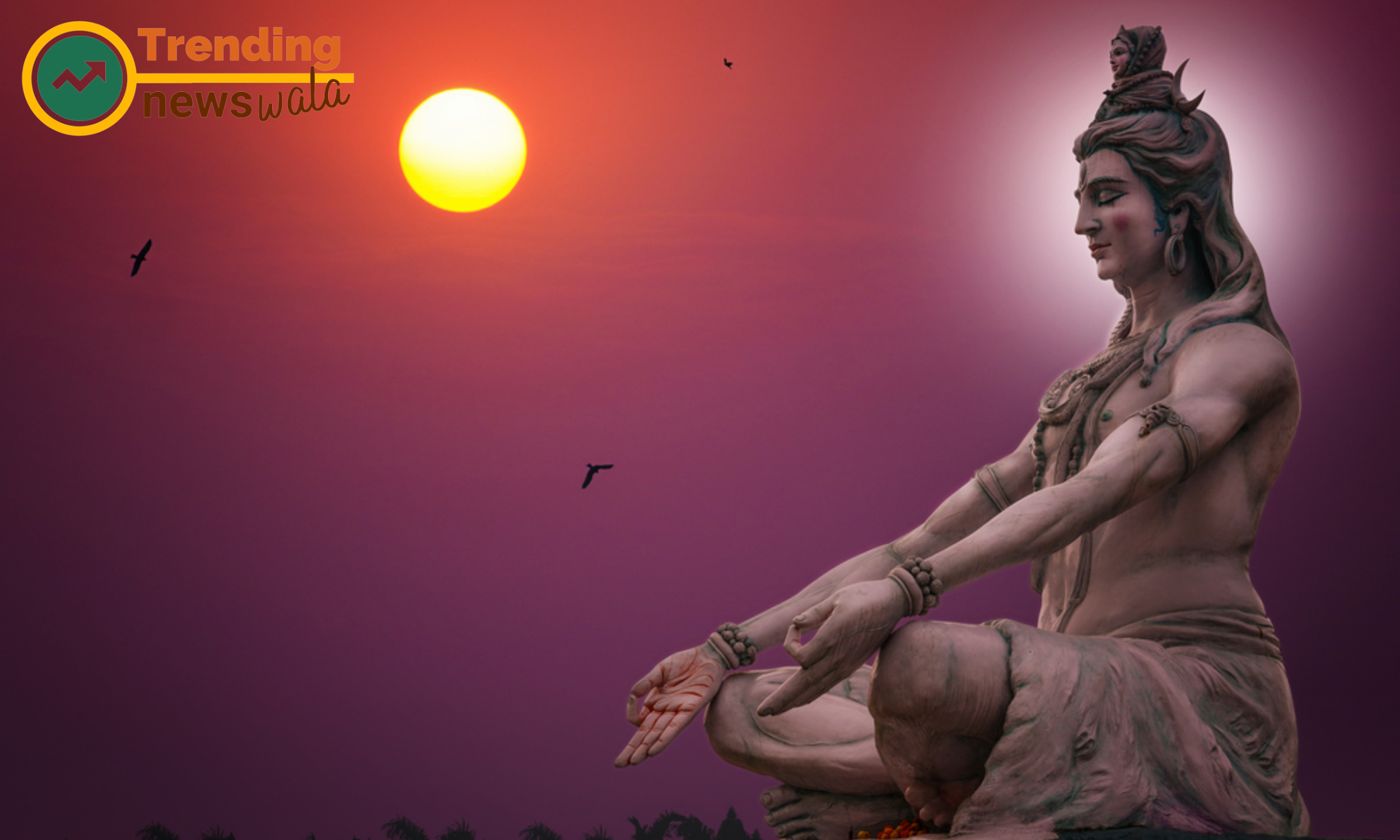
Numerous temples across India, such as the famous Kedarnath and Varanasi, are dedicated to Lord Shiva. These sacred spaces serve as centers for meditation, prayer, and spiritual contemplation, embodying the sanctity of Shiva's yogic presence.
Lord Shiva, the Supreme Yogi and the embodiment of cosmic consciousness, holds a revered place in Hinduism. Throughout the Indian subcontinent and beyond, temples dedicated to Shiva stand as magnificent testaments to devotion and architectural brilliance. In this article, we embark on a journey to explore the sacred sanctuaries devoted to the worship of Lord Shiva, each echoing with centuries of prayers, rituals, and spiritual vibrancy.
Kedarnath Temple - The Abode of Shiva: Nestled amidst the Himalayan peaks in Uttarakhand, the Kedarnath Temple is one of the twelve Jyotirlingas and holds immense significance in Hindu mythology. Pilgrims undertake a challenging journey to reach this sacred site, where the air resonates with chants and the towering shrine stands as a symbol of Shiva's divine presence.
Amarnath Cave Temple - The Ice Lingam Pilgrimage: Situated in the pristine valleys of Kashmir, the Amarnath Cave Temple holds an ice Shiva Lingam that naturally forms during the summer months. The annual pilgrimage to witness the sacred ice Lingam is a testament to the enduring devotion of Shiva's followers.
Somnath Temple - The Eternal Shrine: Located on the western coast of Gujarat, the Somnath Temple is believed to be the first among the twelve Jyotirlingas. With a history dating back thousands of years, the temple has been a witness to various reconstructions and has withstood the test of time, symbolizing the eternal nature of Shiva.
Brihadeeswarar Temple - Architectural Marvel in Thanjavur: The Brihadeeswarar Temple, also known as the Big Temple, in Thanjavur, Tamil Nadu, is an architectural masterpiece built by the Chola dynasty. The towering Shiva Lingam and the intricately carved sculptures narrate stories of devotion and artistic brilliance.
Kailashnath Temple - Ellora's Monolithic Wonder: Carved out of a single rock in the Ellora Caves of Maharashtra, the Kailashnath Temple is a colossal monolithic structure dedicated to Lord Shiva. The detailed carvings depict scenes from Hindu mythology, showcasing the skill and dedication of ancient artisans.
Murdeshwar Temple - Lord Shiva by the Arabian Sea: Positioned on the shores of the Arabian Sea in Karnataka, the Murdeshwar Temple boasts a towering Shiva statue, standing as one of the tallest in the world. The temple complex, with its serene surroundings, provides a picturesque backdrop for spiritual contemplation.
Rameswaram - The Southern Pilgrimage: Situated on Rameswaram Island in Tamil Nadu, the Ramanathaswamy Temple is revered as one of the holiest shrines dedicated to Lord Shiva. Pilgrims undertake a sacred journey to take a dip in the Agni Teertham before offering prayers at the temple.
Kashi Vishwanath Temple - Spiritual Heart of Varanasi: Nestled along the ghats of the Ganges in Varanasi, the Kashi Vishwanath Temple is a spiritual haven for devotees seeking the blessings of Lord Shiva. The narrow lanes of Varanasi echo with the sounds of bells and chants as pilgrims make their way to this revered sanctuary.
Chidambaram Nataraja Temple - The Cosmic Dance Hall: Dedicated to Lord Shiva in his form as Nataraja, the cosmic dancer, the Chidambaram Nataraja Temple in Tamil Nadu is a celebration of the divine dance of creation and destruction. The sanctum of the temple represents the stage for Shiva's cosmic performance.
Pashupatinath Temple - Nepal's Sacred Abode: Across the border in Nepal, the Pashupatinath Temple stands as a sacred abode dedicated to Lord Pashupatinath, a manifestation of Shiva. The temple, located on the banks of the Bagmati River, is a revered pilgrimage site for Hindus from around the world.
Temples dedicated to Lord Shiva serve as not only architectural marvels but also as spiritual epicenters where devotees converge to seek solace, blessings, and a connection with the divine. Each of these sacred sanctuaries tells a story of devotion, resilience, and the enduring power of faith in the cosmic force that is Lord Shiva. As pilgrims and visitors traverse the sacred grounds, they become part of a timeless tradition that links the mortal with the immortal, creating a tapestry of spiritual heritage that spans generations.





